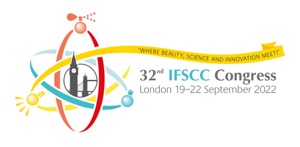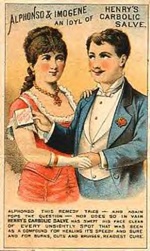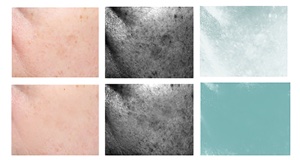
Demonstrating the benefits of personal care products has come a long way since unregulated advertising at the turn of the last century extolled highly unlikely benefits for skin preparations in newspapers. Such claims, including ‘reducing soap’ to ‘wash away fat’ as you cleanse yourself, or a salve to ‘instantly wipe away all traces of unsightly spots’, made promises to consumers that lack all credibility by today’s standards. The lack of advertising regulations allowed this hyperbolic and completely unsubstantiated type of advertisement to flourish.
Times have, thankfully, moved on and, in the 1980s, the large personal care companies started to seek new ways to measure the benefits of products on skin compared with the largely clinical observations being made through the 1960s and 1970s.
Instruments such as the Corneometer, Tewameter, Skicon and others were developed to objectively measure skin hydration and barrier function.
Professor Ronnie Marks founded Cutest Systems in 1984 to develop these new techniques, working with the instrument manufacturers, other dermatologists and scientists, and using his clinical knowledge, to rapidly evolve the capabilities of measuring product performance in objective ways. The age of objective quantification of a broad range of skin and hair parameters was firmly established, and with it better ways to understand the benefits of products for consumers.
A history of regulation
As the ability to measure changes in skin and hair became ever more refined and sensitive, there arose a need to contextualise the measurements in terms of advertising claims. The advertising regulators started to work with the industry to understand whether measuring changes on the skin related to the experience the consumer could expect from a product.
Instruments had become so sensitive that small changes in moisturisation, skin elasticity or wrinkle depth could be measured accurately and statistically significant changes demonstrated. The concern became whether these changes could be experienced by the consumer and therefore whether these claims were a sophisticated update on the unrealistic claims of 150 years ago.

Gradually, consensus and a framework for supporting claims has been established, and brands and testing companies such as ourselves now understand the data needed to truly demonstrate a consumer benefit. There is, and probably always will be, a challenge in demonstrating that a particular product benefit that we can measure is important and relevant to consumers. This is a challenge that innovation creates: as we find new ways of measuring the skin or hair and demonstrating changes due to age, environment or product use, we are faced with trying to ensure that what we measure relates to the consumer experience.
Measurements, however elegant, sensitive and robustly made, must help consumers choose products and describe the benefits that they will enjoy. In a crowded marketplace, this is the role that companies such as ourselves play, interacting with brands, regulators and trade bodies to evolve the science and ensure that we deliver relevant consumer measurements.
Translating measurements into claims
There are currently a wide range of sophisticated measurement techniques available to understand how skin and hair function, how age and environment change them, and how products can help protect or improve the appearance.
We have invested consistently in new technologies that allow us to provide greater insights into product benefits. The current state of the art in skin care testing includes non-contact 3D surface measurement systems, such as the Primos and Vectra systems from Canfield. These systems allow measurements of lines and wrinkles, pores, spots and lesions and changes to the shape or volume of features, such as cheeks and eye bags.
Previous systems relied on silicone replicas of the wrinkles being taken and measured, which introduced large errors due to pressure of application of the silicone and the shrinkage over time as it cured. The modern 3D systems build detailed 3D skin images without contact with the skin, allowing more accurate and reliable data. Similarly, our Vectra system allows measurements of large areas of the face or thigh (eg, for cellulite dimpling) that were simply not possible before these systems were developed.
As I discussed earlier, having the capability to make accurate measurements is only part of the role of a company such as ourselves. The relevance of these measurements must also be demonstrated.
Just because we can measure a change in wrinkle depth of a few microns does not necessarily mean that the consumer will notice this. Our philosophy is therefore to combine measurements with a range of imaging and clinical techniques to show visible changes that the consumer is likely to experience. We select the imaging technique to best demonstrate the visible change (eg, skin redness reduction, visibility of pores, evenness of skin tone) and compare standardised before and after images, presented to blinded observers in random order. The example below shows an example of quantitation and visualisation of the benefits of a product to improve evenness of skin tone.

The left-hand images show before and after standardised images, while the other images are conversions to greyscale and thresholding versions, to allow us to quantitate the evenness of the skin appearance. Using these techniques, we can relate the visible changes, as demonstrated in the left-hand images, to data describing how the skin appearance has changed quantitatively.
By combining techniques, we can ensure that technical measurements have relevance to the consumer experience of the product benefit. Similarly, using the Visia CR, we can image a variety of changes in the skin, such as the example of using porphyrin fluorescence to visualise pores and the benefits of exfoliation to remove bacteria and skin debris from pores.
Techniques are now evolving beyond surface measurements of the skin or hair. We are currently using a Vivascope in vivo confocal microscope to image into the skin at the cellular level.
Using this instrument, we can optically ‘biopsy’ the skin of volunteers, without the need to make surgical cuts, with the resultant scarring and discomfort this causes. The technique will allow a new leap in how we understand skin and product benefits, as we are now able to image melanocytes and melanin granules, the dermal-epidermal junction, individual keratinocytes and observe erythrocytes moving through capillaries.
With each advancement in the technologies, the challenges remain the same as they were when the first measurements were reliably made by Prof. Marks and others: how to relate advanced technical measurements that provide new types of data, to the consumer experience.
As we develop and adopt new techniques in skin and hair measurement, we must always be conscious of the relationship between what we can scientifically distinguish, and whether this is important to the consumer. This will become even more important as we now begin to measure the skin microbiome, sample RNA and DNA from skin and even study metagenetic changes in skin.
These new techniques generate huge volumes of data that illustrate changes in gene expression across potentially hundreds, or thousands of genes. It will be important as an industry to keep innovating, but without losing sight of the reason we make these measurements: to help the consumer choose the most appropriate and beneficial product for them.
If we keep this focus, the industry will continue to deliver products that the consumer enjoys and values. It is the role of companies like Cutest Systems to ensure we innovate with the consumer in mind.
Author
Stewart Long, Chief Executive Officer, Cutest Systems Ltd, UK
Stewart Long is CEO with Cutest Systems Ltd. He is also Immediate Past President of the UK Society of Cosmetic Scientists and sits on the Steering Committee for the 32nd IFSCC 2022 Congress, taking place in London from 19-22 September 2022 in London. Cosmetics Business is lead media partner for the IFSCC 2022 Congress in London. For more information about the Congress or to get involved visit www.ifscc2022.com
